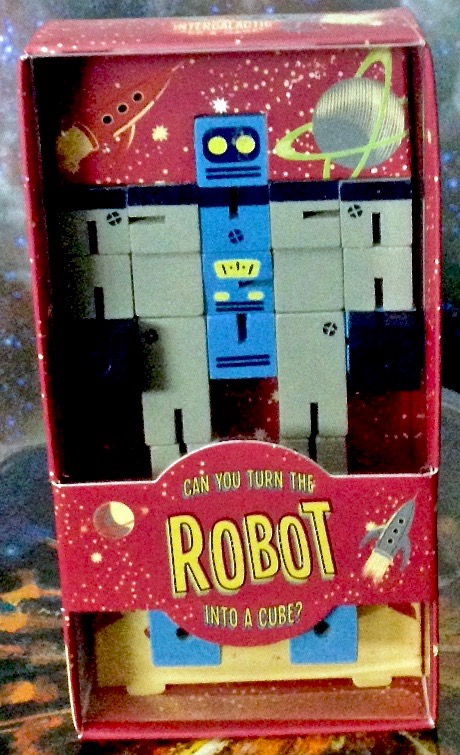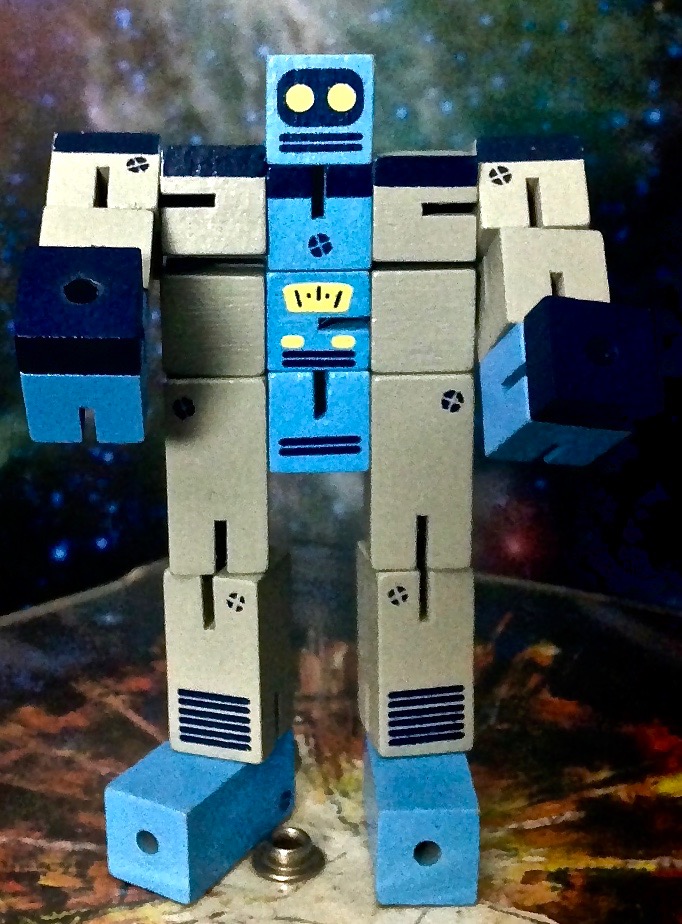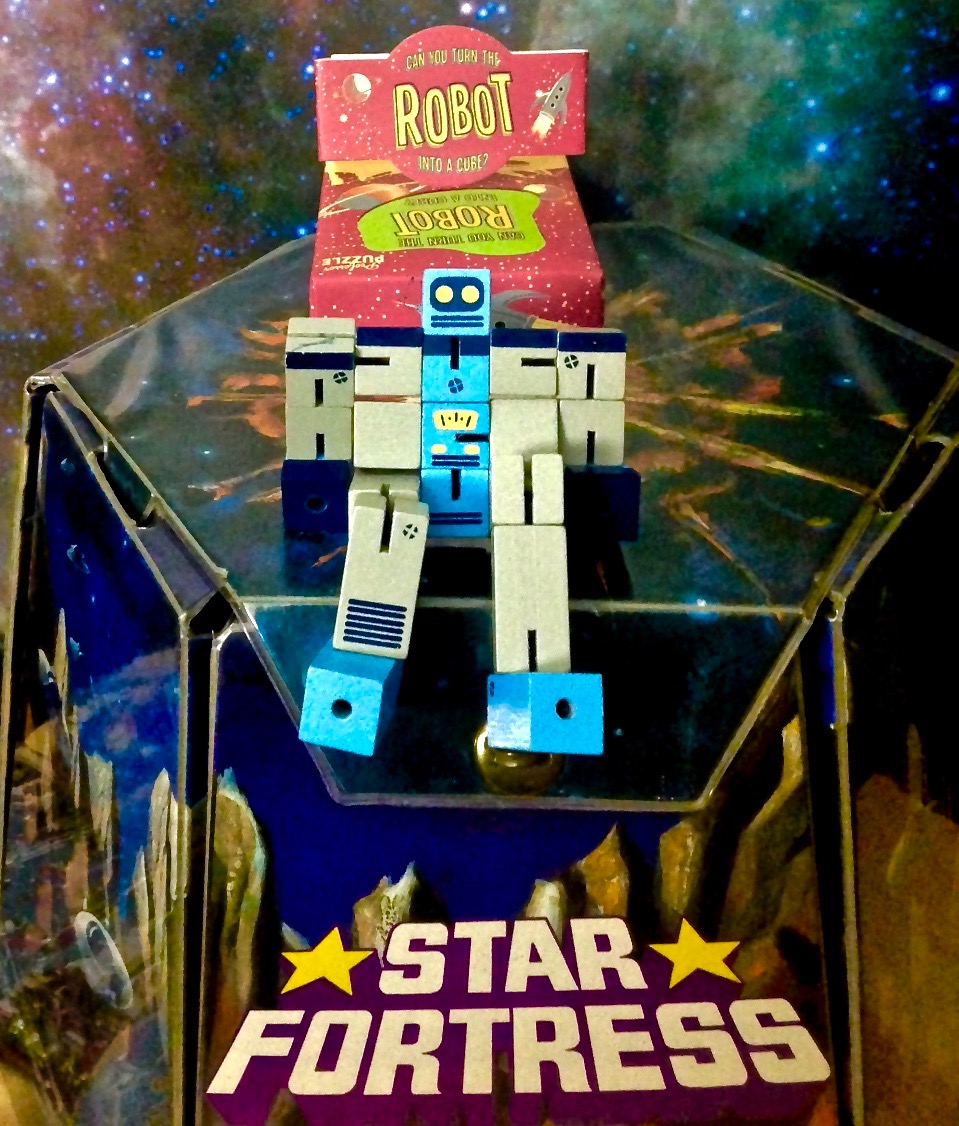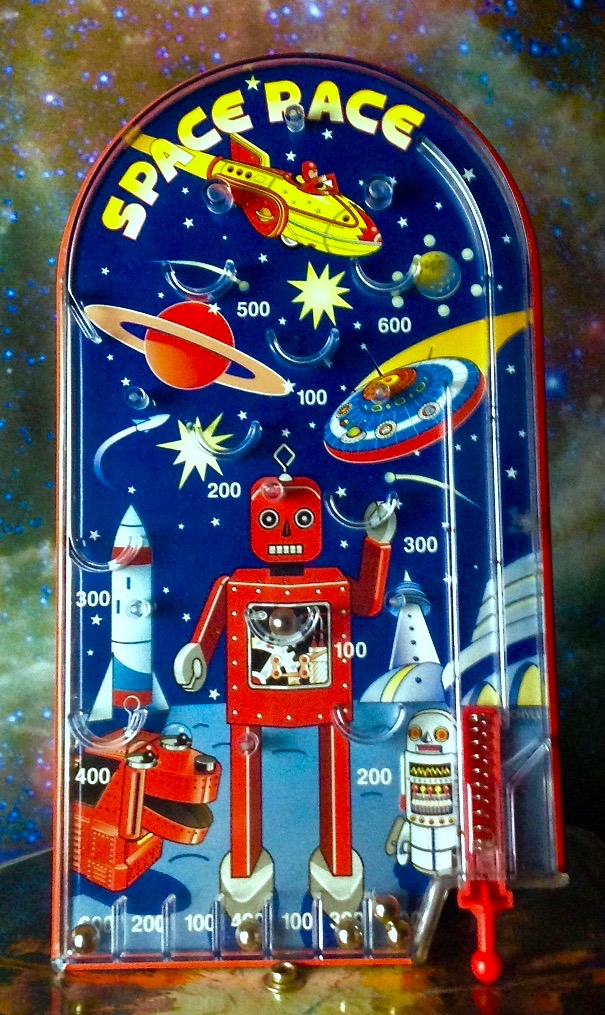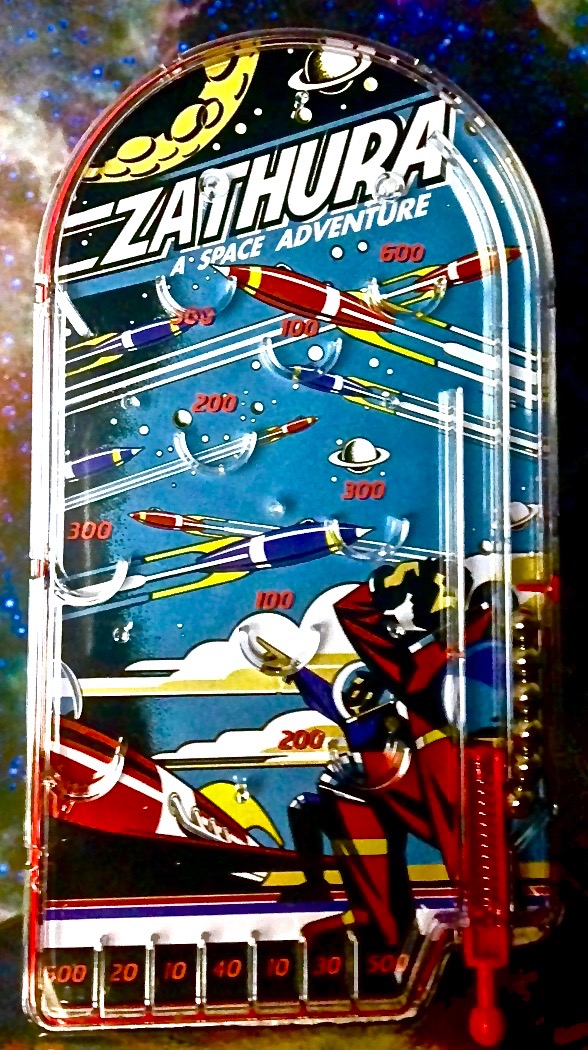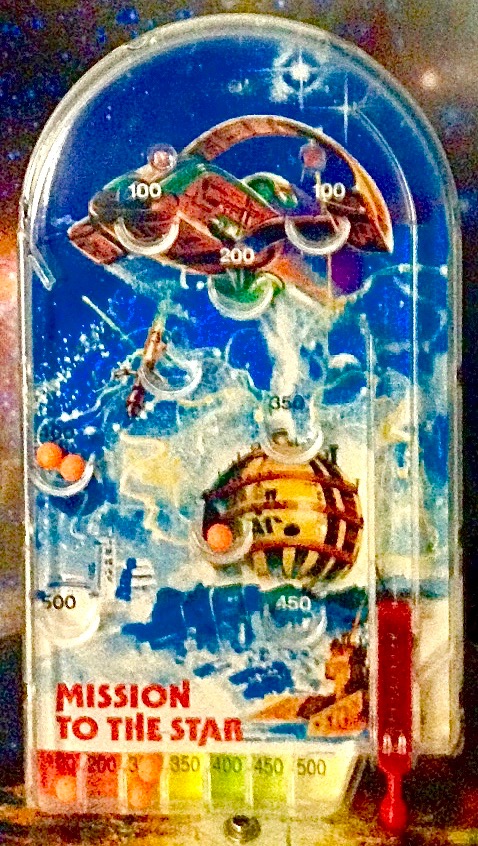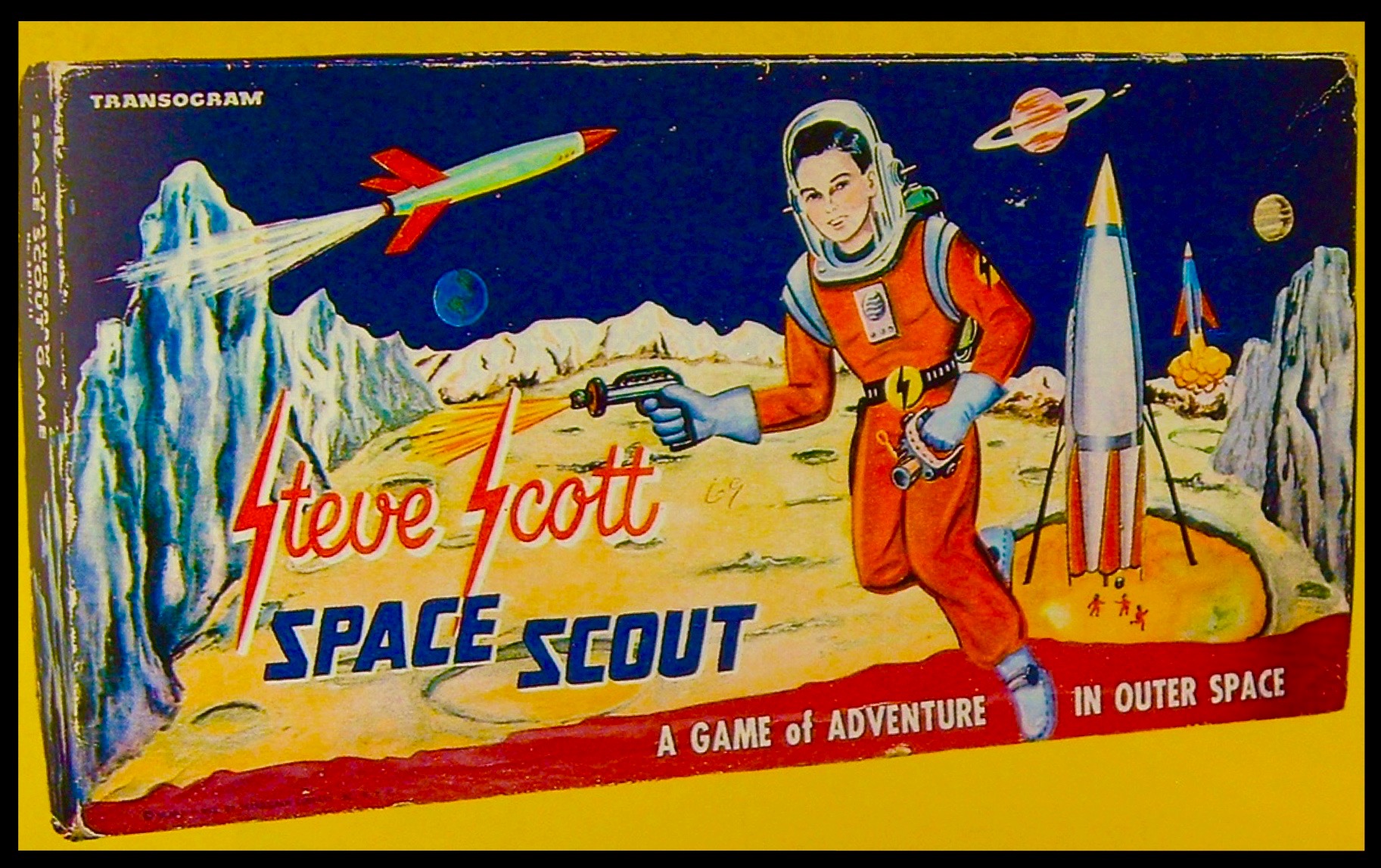|
|
|
Above
Left: Puzzle robot from Professor Puzzle, a
puzzle and game company in the U.K.. This robot
is adapted from their popular Puzzleman, which
has a natural finish and comes boxed as a cube.
"Can you turn the robot into a cube?" is the
challenge posed on the robot box, which is
attractively decorated with art reminiscent of
Rocket USA. The robot is considered difficulty
level one. It's copyrighted 2016.
Above
middle: Unboxed, the robot can be posed. The
Puzzle Planet series also includes an Alien,
Astronaut, and Emperor, all of which are made of
painted wood pieces.
Above
right: The robot sits on a Star Fortress
playset, with the Heart Nebula in Cassiopeia in
the background. This robot is part of the
Intergalactic Fun and Games series at
Professorpuzzle.com, which also includes
Planetary Pinball, Robot Rampage, and Crash
Landing.
|
Above
left: Schylling Space Race pinball game. The game
measures just over 9.5" X 6", and includes six steel
balls. The retro art background depicts various robot
and space toys. It's copyrighted 2000.
Above middle: A Schylling space-themed pinball game
with graphics geared to the movie Zathura. The box
notes that "Zathura" is copyrighted 2005 Columbia
Pictures Industries Inc., and that the game is
intended for ages 3 +.
Above right: A "Mission to the Star" pinball game from
a dollar store. The construction is similar to the
Schylling games except that the balls are orange
plastic, and lack the weight needed to launch well.
The beautiful graphics, however, rival those of the
Shyliing games.
|
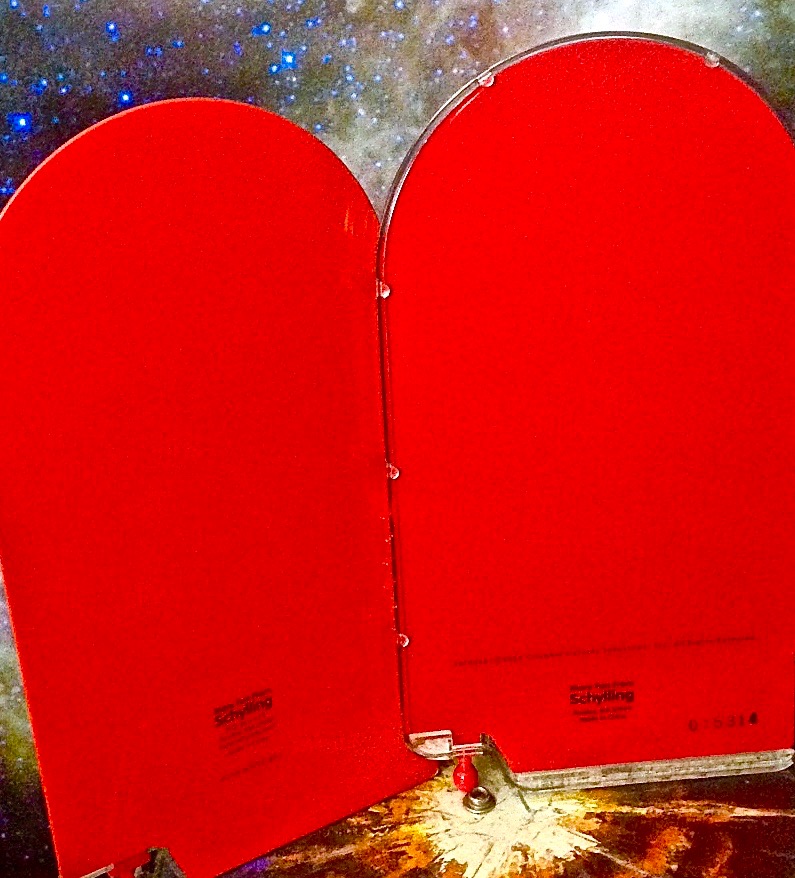
|
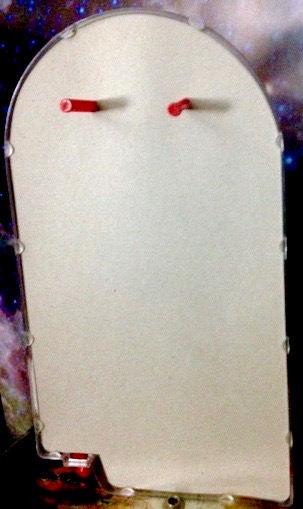
|
Above
left: Both Schylling pinball games have metal
backs in the vibrant red-orange which is almost a
Schylling tradmark. Close examination, however,
reveals slight differences. In the Space Race pinball
(left), the metal back wraps around the clear plastic
front. In the Zathura pinball (right), the plastic
front snaps over the metal back.
Above right: The back of the Mission pinball is
cardboard, but has two holes into which two included
pegs can be inserted to elevate the pinball game. The
Schylling games have the same holes for the pegs
molded in the clear plastic, but the metal backs cover
where the pegs would go. The similarities of design
suggest that the Schylling games may be highly
upgraded versions of the Mission game.
|
| Above:
This magnetic Space Target game was distributed by
Rocket USA. The cardboard back has a sticker about games
to play. It came with three "thwack" safety space darts,
which store in a slot in the back. I replaced these with
three plastic magnet tipped darts from a magnetic dart
board from the dollar store, as I think they fly better
(the red one's flights broke off). The metal target is
beautifull decorated with retro space art and measures
8.5" X 6.5". There is a hole in the back for hanging.
The target is copyrighted 1999 by Derivative Arts
Corporation. |
| Robot
and space-themed games have long been popular, and often
feature beutiful graphics like this Steve Scott Space
Scout game from Transogram in 1952. Transogram later made
many board games based on cartoons, including The Jetsons. |
| Above:
By far the most popular robot game of all time is Rock 'Em
Sock 'Em Robots. It appeared in 1965 feom Marx Toys, and
was later rereleased by Mattell. Marx Toys ads called the
match between the Red Rocker and the Blue Bomber "The
Battle of the Century". One of the many later box designs
is shown above. According to toy historian Tim Walsh,
author of "The Playmakers" AKA "Timeless Toys", it was a
collaborative invention of Burt Meyer, Harry Disko, and
Judd Reed at Marvin Glass Associates (MGA) the toy and
game design firm headed by the murcurial Marvin Glass, at
which were created many of the best-known games and toys
of the time, including Mouse Trap, Lite-Brite, Mystery
Date, Mr. Machine, and Operation. |
|


